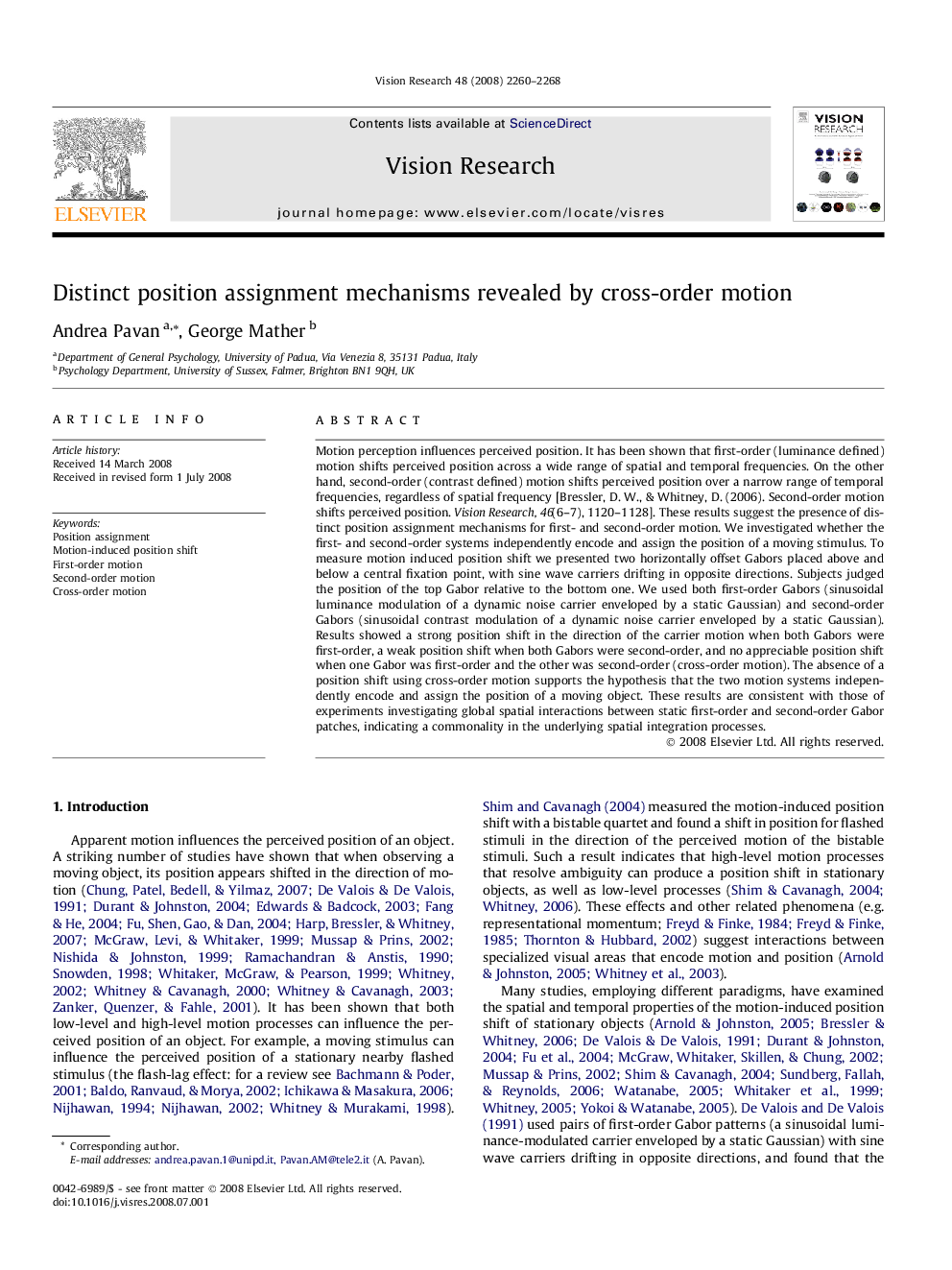| Article ID | Journal | Published Year | Pages | File Type |
|---|---|---|---|---|
| 4035559 | Vision Research | 2008 | 9 Pages |
Motion perception influences perceived position. It has been shown that first-order (luminance defined) motion shifts perceived position across a wide range of spatial and temporal frequencies. On the other hand, second-order (contrast defined) motion shifts perceived position over a narrow range of temporal frequencies, regardless of spatial frequency [Bressler, D. W., & Whitney, D. (2006). Second-order motion shifts perceived position. Vision Research, 46(6–7), 1120–1128]. These results suggest the presence of distinct position assignment mechanisms for first- and second-order motion. We investigated whether the first- and second-order systems independently encode and assign the position of a moving stimulus. To measure motion induced position shift we presented two horizontally offset Gabors placed above and below a central fixation point, with sine wave carriers drifting in opposite directions. Subjects judged the position of the top Gabor relative to the bottom one. We used both first-order Gabors (sinusoidal luminance modulation of a dynamic noise carrier enveloped by a static Gaussian) and second-order Gabors (sinusoidal contrast modulation of a dynamic noise carrier enveloped by a static Gaussian). Results showed a strong position shift in the direction of the carrier motion when both Gabors were first-order, a weak position shift when both Gabors were second-order, and no appreciable position shift when one Gabor was first-order and the other was second-order (cross-order motion). The absence of a position shift using cross-order motion supports the hypothesis that the two motion systems independently encode and assign the position of a moving object. These results are consistent with those of experiments investigating global spatial interactions between static first-order and second-order Gabor patches, indicating a commonality in the underlying spatial integration processes.
